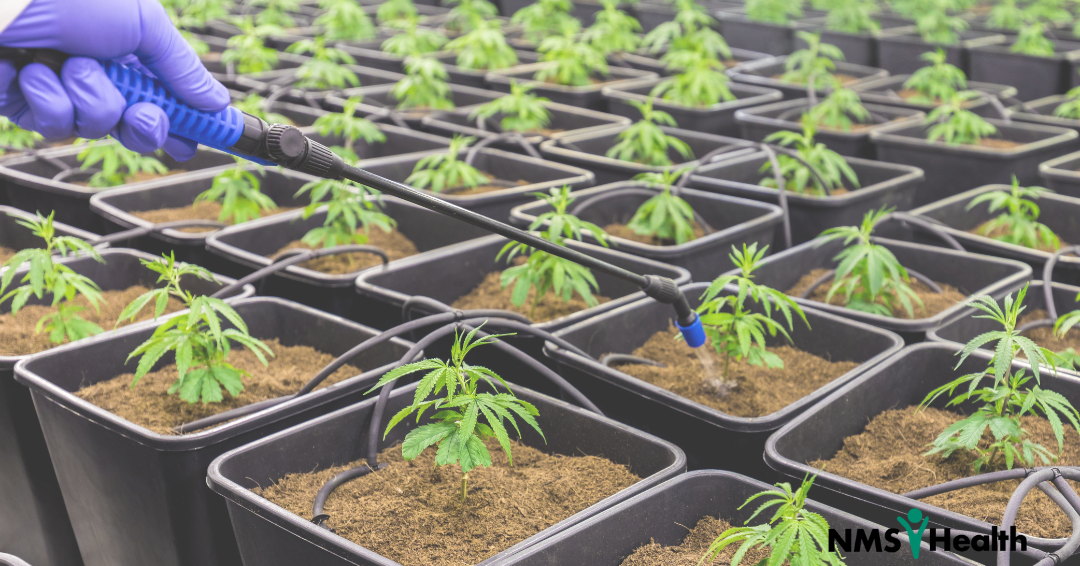The burgeoning legal cannabis industry has witnessed unprecedented growth, but with it comes a pressing need for improved occupational health and safety standards. In a sobering revelation, federal health and safety officials have reported on a tragic incident that unfolded in a Massachusetts cannabis facility, which culminated in the first case of occupational asthma fatality in cannabis production. The incident has sent shockwaves through an industry that has seen rapid expansion in recent years due to many state-level legalizations.
The Tragic Incident
The comprehensive report outlining the findings of an Occupational Safety and Health Administration (OSHA) inspection has come nearly two years after the tragic death of a 27-year-old woman.
The victim, identified as Lorna McMurrey, initially served as a cycle counter before transitioning to flower production by October 2021. Subsequently, her new responsibilities included grinding cannabis plant flowers and crafting cannabis cigarettes (prerolls). This shift marked a turning point as she began grappling with work-related respiratory symptoms—runny nose, cough, and shortness of breath—despite no history of asthma.
“These activities resulted in increased dust exposure. A shop vacuum collected dust from the grinder; however, the vacuum had no high-efficiency particulate air (HEPA) filter, and visible dust escaped,” the federal report noted. “Other flower production coworkers reported that the employee’s cough increased, particularly when the grinder was on.”
Although she took additional precautions, including wearing an N-95 mask, gloves, and long sleeves, Lorna’s health was adversely affected. In addition to wearing PPE, she also moved her workstation outside of the grinder room, according to the report.
Timeline of Events
– May 2021: Employee begins work in various roles throughout the facility.
– July 2021: Employee experiences what is believed to be COVID-19 symptoms, including nausea, runny nose, and cough. Tests return negative results.
– October 2021: Employee transitions to a flower technician role involving grinding cannabis flower, leading to increased dust exposure.
– November 9, 2021: Emergency responders are called when the employee experiences shortness of breath and receives treatment and medication.
– January 4, 2022: Employee reports worsening shortness of breath and experiences a fatal asthma attack despite using an inhaler. Unfortunately, emergency responders are unable to revive her, marking the first asthma fatality in cannabis production recording in the United States.
Inspection Findings
The CDC report covers the findings of a federal Occupational Safety and Health Administration (OSHA) inspection, which involved a comprehensive worksite exposure assessment, interviews with coworkers and family, medical record reviews, and collaboration with the Massachusetts Department of Public Health.
The subsequent inspection revealed crucial findings. Four out of 10 coworkers with similar roles report respiratory or skin symptoms, underscoring potential hazards. In a related report published by the Massachusetts Department of Public Health’s Fatality Assessment and Control Evaluation (FACE) Program, investigators identified three “unrecognized hazards” that were key contributing factors in the incident: “failure to recognize ground cannabis as a potential occupational respiratory hazard; failure to adequately control the spread of airborne cannabis dust; and lack of comprehensive safety and health program and overall health training.”
Implications for the Future
The CDC Report is not just a summary of one incident. It reviews the research on occupational health hazards associated with cannabis exposure and identifies strategies for responding to potential allergic responses in the workplace. Employers in the industry should be aware of these issues. Subsequently, they must consider how they might need to change their operations accordingly.
The National Institute for Occupational Safety and Health (NIOSH) stresses the hazards faced by cannabis industry workers—bacteria, mold, fungi, and allergen-laden dust. These hazards emphasize the critical need for thorough hazard assessment and control measures to protect employees from biological occupational exposures. The incident in Massachusetts serves as a stark reminder that occupational allergic diseases, including asthma, are emerging concerns in the rapidly expanding U.S. cannabis industry.
“This case illustrates missed opportunities for prevention, including control of workplace exposures, medical surveillance, and treatment according to current asthma guidelines,” the report, published in the CDC’s “Morbidity and Mortality Weekly Report,” indicated.
As the cannabis industry continues to navigate the complex landscape of legality and expansion, this tragic death prompts a critical reevaluation of safety protocols. Beyond the immediate grief and loss, it catalyzes collective action, urging lawmakers, businesses, and regulatory bodies to fortify the guardrails around an industry that holds significant promise but demands vigilant oversight to protect those working within it.
Ready to elevate your workforce’s health? Partner with NMS Health for your occupational health screenings. With NMS Health you are not just identifying, intervening, and preventing future illness, you’re investing in a safer, healthier future for your team. Get started today!


